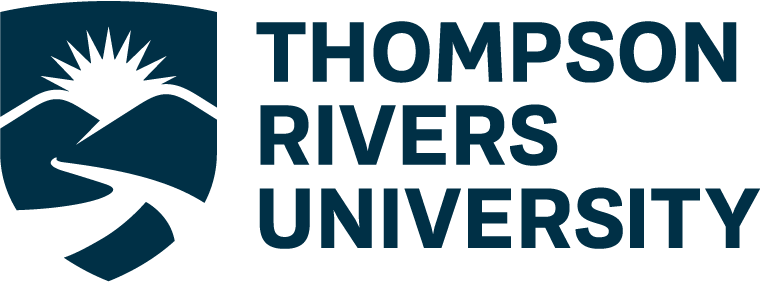What is Soundtrap?
Soundtrap, an online digital audio workstation (DAW) owned by Spotify, enables users to create, edit, and collaborate on audio projects. Founded in 2012 and launched in 2013, Soundtrap has become a widely-used platform in education since its expansion into schools in 2015. It offers classroom management tools, student privacy protections, and integrations with Google Classroom and Microsoft Teams, making it particularly popular in K-12 and higher education for music production, podcasting, and storytelling (Soundtrap, 2025).
Educational Benefits of Soundtrap
Academic Articles
According to an article in the Journal of Music, Technology & Education, DAWs like Soundtrap allow students creative control over their music by adjusting tempo, key, and sound layers. This opens up new opportunities for musical exploration that extend beyond traditional performance-based learning. Soundtrap offers flexibility, enabling students to create, edit, and collaborate at any time, unlike live performances that require specific schedules (Dockan et al., 2023). Students can work from any device—computer, tablet, or smartphone—making music education more accessible.
Soundtrap existed before COVID-19, but its impact on education grew significantly during the pandemic. Knapp (2023) highlights this shift in the Canadian Music Educator, emphasizing that the future of music creation for students in the digital age depends on its ability to expand access and enhance creativity. He specifically recommends Soundtrap as a key tool for this transformation. Knapp also stresses the need for teacher education programs to prepare music educators for classrooms where technology like Soundtrap plays a central role (Knapp, 2023, p. 24).
Informal Articles
The New York Times highlighted a project where students create podcasts, developing communication, storytelling, and technical skills all while using Soundtrap. The author contended that this hands-on experience enhanced critical thinking and problem-solving while allowing students to explore topics (Levin, 2018).
An article from Soundtrap shares the story of a teacher in Uganda using Soundtrap in a remote community with limited technology. Despite these challenges, students successfully created an audio project, demonstrating Soundtrap’s ability to connect communities and foster creativity (Fischer, 2019) around the globe. .
Articles from Soundtrap for Education
Benefits for Teachers and Students
Soundtrap is a user-friendly tool for teachers, offering seamless integration with Google Classroom and Microsoft Teams to manage assignments and track student progress. Teachers can assign groups, provide feedback, and access student projects in real-time, ensuring smooth collaboration (Soundtrap, 2025). The platform supports a range of subjects, enabling teachers to create lessons for English Language Arts, math, and social studies. Its cloud-based design ensures accessibility across devices, enhancing flexibility.
Beyond music, Soundtrap offers students innovative ways to engage with other subjects, such as using music to memorize the periodic table of elements, learn about fractions, or enhance literacy and language development through podcast creation. The platform’s collaboration tools also allow students to work together on projects in real-time, promoting teamwork and shared creativity (Soundtrap, 2025).
An important benefit of Soundtrap is that it provides a safe, closed system, ensuring a secure environment for students to learn and create. The platform also includes transcription tools, which automatically convert recorded speech into text, supporting podcast projects and aiding students who are new to English (Soundtrap, 2025).
Finally, Cross-device access allows students to continue working on their projects from any device—computer, tablet, or phone—offering flexibility and accessibility. Together, these features support student creativity, collaboration, and learning across subjects and media, making Soundtrap a powerful tool for education (Soundtrap 2025).
Universal Design for Learning (UDL) and Project-Based Learning (PBL)
Soundtrap supports Universal Design for Learning (UDL) by providing students with multiple means of expression. It allows learners to create podcasts, compose music, and use spoken word, making content more accessible and engaging for diverse learning styles (Soundtrap, 2025). The platform is accessible through keyboard shortcuts and the use of a screen reader if students require these accommodations (Soundtrap 2025).
Soundtrap enhances project-based learning (PBL) by providing students of all ages and skill levels with a collaborative, creative, and technology-driven platform to explore real-world challenges. Through Soundtrap for Education, teachers can engage students in hands-on projects such as podcast creation and digital storytelling, empowering them to express their ideas in meaningful ways (Soundtrap.2025).
One of the key strengths of PBL is fostering collaboration as both a process and a skill. Soundtrap enables students to work together—whether in the same classroom or across the globe. A powerful example of this occurred when students in Oss, Netherlands, and Ann Arbor, Michigan collaborated on a shared Soundtrap project without ever meeting in person (Soundtrap, 2019). This opportunity, sparked by a social media exchange, demonstrates how Soundtrap breaks down barriers and connects students worldwide through shared creativity and learning experiences.
By integrating Soundtrap into a classroom, educators can create engaging, student-centered learning environments that emphasize teamwork, communication, and critical thinking, preparing students for success in an increasingly digital world.
References
Dockan, D., Knapp, D., Clauhs, M., & Powell, B. (2023). An exploratory study on the impact of the COVID-19 pandemic on music teacher engagement with Soundtrap. Journal of Music, Technology & Education, 16(1/2), 25–40. https://doi-org.ezproxy.tru.ca/10.1386/jmte_00058_1 EdTech Books. (n.d.). Soundtrap. Retrieved March 10, 2025, from https://edtechbooks.org/onlinetools/soundtrap
Fischer, G. (2019, January 16). Uganda students introduced to recording online. Soundtrap. https://edu.soundtrap.com/uganda-students-introduced-to-recording-online/
Knapp, D. (2023). The effects of the COVID-19 Pandemic in Canada on the use «of Soundtrap. Canadian Music Educator / Musicien Educateur Au Canada, 64(3), 20–24.
Levin, D. (2018, April 19). Project audio: Teaching students how to produce their own podcasts. The New York Times. https://www.nytimes.com/2018/04/19/learning/lesson-plans/project-audio-teaching-students-howto-produce-their-own-podcasts.html
Soundtrap. (2019). Collaboration: From the Netherlands to the US. Retrieved March 14, 2025. https://edu.soundtrap.com/collaboration-from-the-netherlands-to-the-us/
Soundtrap. (2025). Soundtrap Accessibility. Retrieved 13, 2025. https://support.soundtrap.com/hc/en-us/articles/6262048247058-Soundtrap-Accessibility-Navigation
Soundtrap. (2025.). About Soundtrap. Soundtrap. Retrieved March 10, 2025, from https://www.soundtrap.com/about
Soundtrap. (2025). Soundtrap for Education. Retrieved March 14, 2025 from https://www.soundtrap.com/edu/
Soundtrap. (2025). Utilizing Soundtrap for education in project based learning. Retrieved March 9, 2025. https://edu.soundtrap.com/utilizing-soundtrap-for-education-in-project-based-learning/




Recent Comments